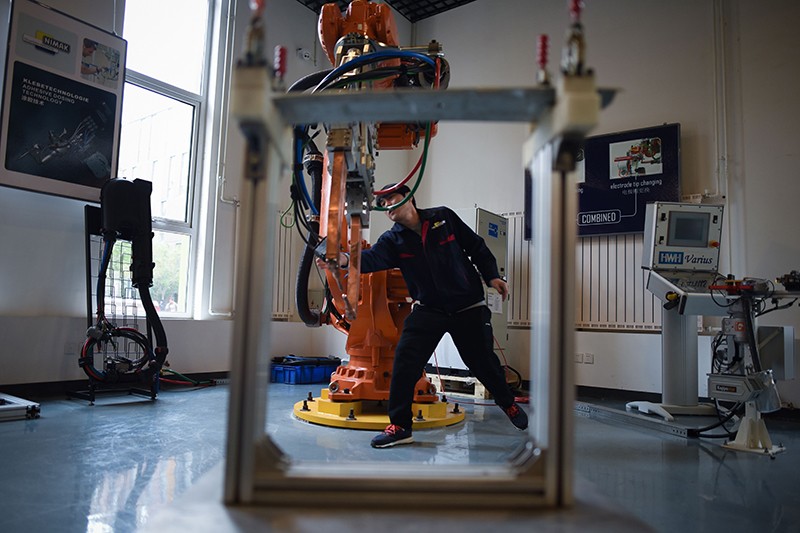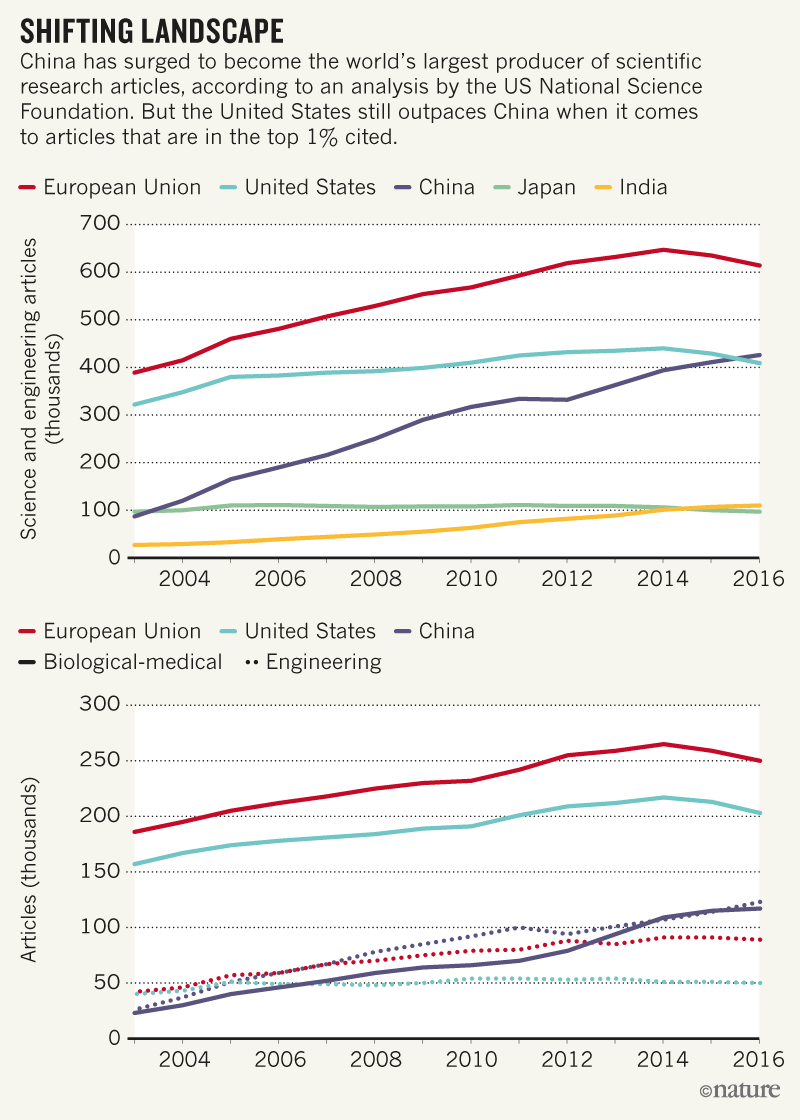Jeff Tollefson
 The agency’s report, released on 18 January, documents the United States’ increasing competition from China and other developing countries that are stepping up their investments in science and technology. Nonetheless, the report suggests that the United States remains a scientific powerhouse, pumping out high-profile research, attracting international students and translating science into valuable intellectual property. “The US continues to be the global leader in science and technology, but the world is changing,” says Maria Zuber, a geophysicist at the Massachusetts Institute of Technology in Cambridge. As other nations increase their output, the United States’ relative share of global science activity is declining, says Zuber, who chairs the National Science Board, which oversees the NSF and produced the report. “We can’t be asleep at the wheel.”
The agency’s report, released on 18 January, documents the United States’ increasing competition from China and other developing countries that are stepping up their investments in science and technology. Nonetheless, the report suggests that the United States remains a scientific powerhouse, pumping out high-profile research, attracting international students and translating science into valuable intellectual property. “The US continues to be the global leader in science and technology, but the world is changing,” says Maria Zuber, a geophysicist at the Massachusetts Institute of Technology in Cambridge. As other nations increase their output, the United States’ relative share of global science activity is declining, says Zuber, who chairs the National Science Board, which oversees the NSF and produced the report. “We can’t be asleep at the wheel.”
The shifting landscape is already evident in terms of the sheer volume of publications: China published more than 426,000 studies in 2016, or 18.6% of the total documented in Elsevier’s Scopus database. That compares with nearly 409,000 by the United States. India surpassed Japan, and the rest of the developing world continued its upward trend.
But the picture was very different when researchers examined where the most highly cited publications came from. The United States ranked third, below Sweden and Switzerland; the European Union came in fourth and China fifth. The United States still produces the most doctoral graduates in science and technology, and remains the primary destination for international students seeking advanced degrees — although its share of such students fell from 25% in 2000 to 19% in 2014, the report says.
The United States spent the most on research and development (R&D) — around US$500 billion in 2015, or 26% of the global total. China came in second, at roughly $400 billion. But US spending remained flat as a share of the country’s economy, whereas China has increased its R&D spending, proportionally, in recent years.

Credit: National Science Foundation
The NSF analysis, the latest edition of the agency’s biennial Science and Engineering Indicators, comes at a time of heightened concern about the state of US science. It should raise some alarms, says Mark Muro, a senior fellow with the Brookings Institution, a think tank in Washington DC. Trends in US science spending are heading in the wrong direction, he says, and the talent pool of researchers continues to be limited by under-representation of women and minorities. Similarly, key industries such as semiconductors have been hollowed out as businesses ship production work to other countries, Muro adds.
For the first time, the NSF included a section on technology transfer and innovation in its statistical analysis. Data suggest that the United States continues to lead the world when it comes to things like patents, revenue from intellectual property and venture capital funding for innovative technologies. Although more focus is needed at the local and regional level, Muro says, the report nonetheless provides important data about the value of scientific innovation.
“A nation’s innovation capacity is one of the main drivers of productivity growth and so prosperity,” Muro says. The new data provide “a useful reminder of why we care about these indicators in the first place.”
No comments:
Post a Comment